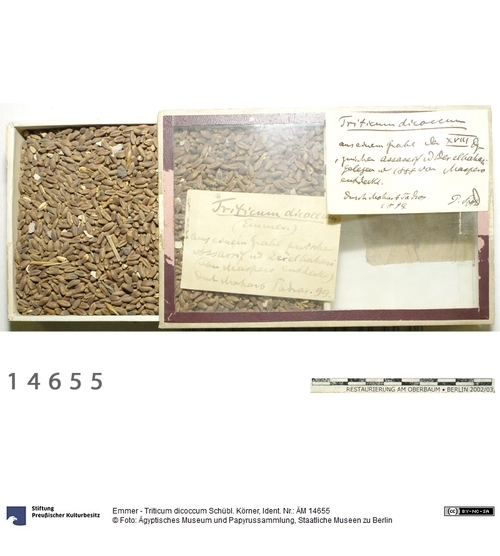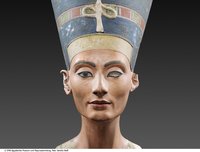Emmer ist eine Weizenart und gehört zu den ältesten kultivierten Getreidesorten. Die ägyptische Bezeichnung lautet Bedet (bd.t) und ist inschriftlich seit dem Alten Reich belegt. Die Kultivierung von Emmer reicht jedoch bis in das Ende des 5. Jahrtausend v. Chr. zurück. Zu dieser Zeit wurde er aus dem Vorderen Orient nach Ägypten „importiert“ und angebaut. Bis dahin waren Nutgras, Sorghum und wohl eine wilde Hirseart die bevorzugten Nahrungspflanzen.
Angaben zur Herkunft:
18. Dynastie
Deir el-Bahari (Ägypten / Oberägypten / Theben-West)
"Zwischen Asassif und Deir el Bahri 1888 [in einem Grab] gefunden." (lt. Inv.)
en

